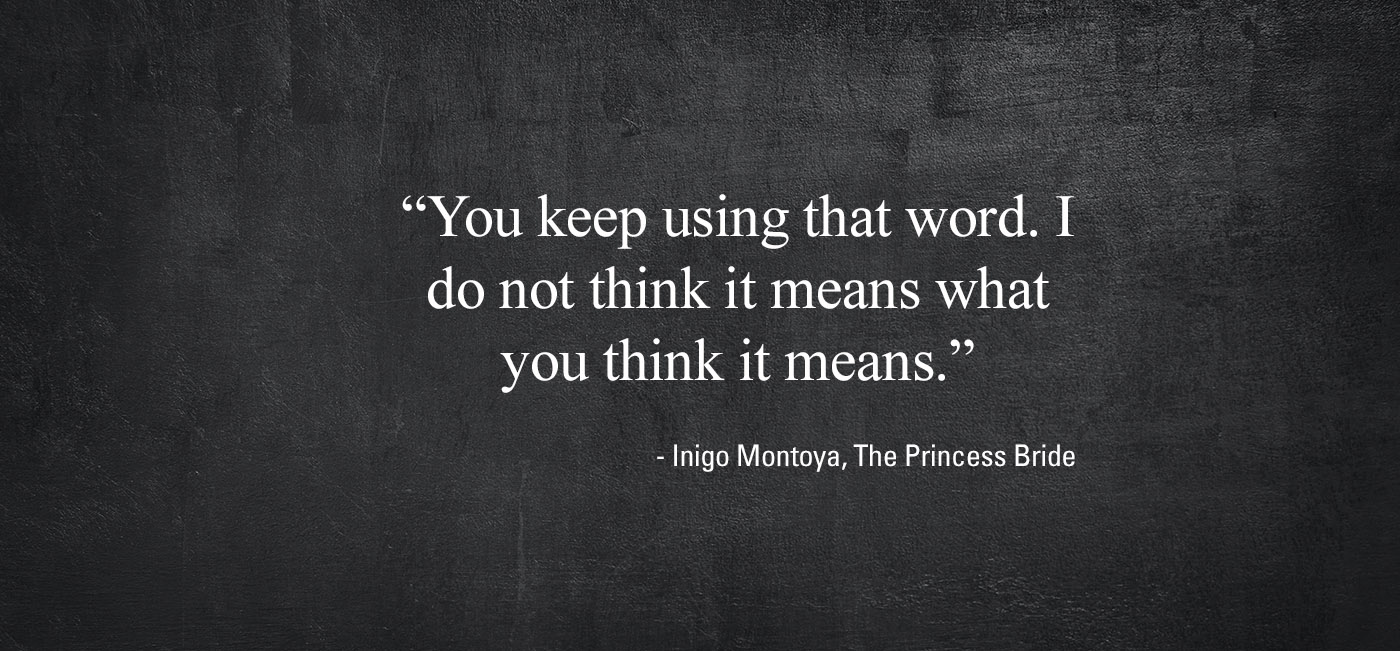Personalization is the holy grail of marketing and sales today, driving ever greater investment in marketing technology (MarTech) platforms, data and digital commerce. How important is it to marketing leaders? 92% of B2B marketers say it is a must, according to Adobe’s 2019 report Progress in personalization. How B2B brands are keeping up with rising demands for personalization. The same report reveals that 91% of senior decision makers say their companies need to improve personalization capabilities. That sentiment is striking in several ways.
Effective personalization — one size does not fit all
In marketing today, the topic of personalization is ubiquitous. Exploding your inbox, the media, LinkedIn, and beyond, the volume of personalization chatter feels incessant. Analysts pontificate about it and MarTech vendors promise outsized growth because of it. Organizations are prioritizing it and striving to collect and leverage the data required to deliver it. Marketers define programs around it and spend millions of budget dollars to track and push their offers to prospects across their omnichannel ecosystems. There is a flood of examples.
Inevitably, it seems, Amazon becomes part of the conversation as the idolized best-practice model, the ultimate success story of digital commerce personalization done right. Facebook, on the other hand, has become the poster child of personalization abuse, unleashing the unintended consequences of personalization engine algorithms.
Business loves “best practices” and there is no shortage of “marketing personalization best practices” to be discovered via search (“About 23,000,000 results” according to Google). Analyst and vendor case studies are abundant.
There is one problem though — personalization “best practices” is discussed and consumed in aggregate, as a one-size fits all discussion and with a heavy reliance on technology over context.
The B2C model of Amazon is one retailers and digital commerce marketers dream about, but B2B is not retail. And, frankly, “Dear <firstname>” is not personalization, at least not to any senior B2B decision makers I know. Without consideration of the distinct differences between B2C and B2B buyers, purchase paths and other criteria, B2B marketing personalization is commonly misaligned and misdirected — and your audience recognizes it.
What does personalization mean to B2B buyers?
In the movie The Princess Bride, Inigo Montoya is the Spanish henchman to the Sicilian criminal Vizzini. Throughout the movie Vizzini, upon encountering unanticipated events, repeatedly declares “Inconceivable!” Montoya finally says to Vizzini, “You keep using that word. I do not think it means what you think it means.”
B2B marketers often use tactics they consider to be personalization best practices, applying whatever data they have, but often fall short of their audiences’ expectations as well as their own. It’s not a small problem.
The inevitable question is this — what does true personalization look like for your organization and market? More important, what does personalization mean to your prospects and customers?
Poorly done, superficial personalization can look a lot like stalking. And, unless vendor personalization attempts are meaningful and add true value, they are just background noise. B2B buyers are different. Full stop. High-dollar B2B transactions are very different, possessing long and complex sales cycles among multiple decision makers. This changes the meaning of personalization.
B2B buyers want personalization, in human terms, within the context of their roles and priorities. Putting your target’s first name in the emails you keep sending to them is not personalization in the way you think it is. Business decision makers want and need trustworthy information, perhaps more now than ever. They do not want or need more emails and programmatic ads shoved into their browser based on information your organization has acquired. Rather than validate the trust you think you are building, cheap “personalization” tactics undermine it.
Personalization is powerful
Personalization is powerful and the data confirms it. 87% of marketers report a lift in success due to personalization according to data reported by outgrow.co. However, personalization is not the same for all, and again, the data point lacks clarity without some definition of “personalization” tactics and some understanding of the audience reporting improved performance. In other words, the context matters, which is largely the point.
Buyers of commoditized products behave much differently than the buyers of complex business solutions and services. Those differences matter.
Meaningful B2B Personalization
How do you design meaningful B2B personalization into your marketing and sales engagement? Begin by defining what personalization means to your prospects and customers. Place the emphasis on their needs, understanding the context and priorities of their roles, how their buying process works and the kinds of outcomes and information that is relevant to them. The right content, at the right time, for the right buyer is the goal of personalization. Defining what that means at each stage takes work, but it’s the secret to doing it properly.
Define your brand value and story — Every successful B2B organization has a customer value proposition. Define what makes yours unique — and what does not. Make sure everyone in marketing and sales understands it and how to use it. It defines your brand. Your prospects don’t care about your brand, your product or service, until they have a reason to care.
Historically, before digital transformation engulfed the universe, the role of giving B2B prospects a reason to care about your business solutions was done almost exclusively through personal interaction. Helping people buy has traditionally been the role of salespeople. That has changed.
Today, B2B buyers rely on a significant percentage of digital discovery, education, and interactions before engaging with sales. Buyer information needs haven’t changed, in fact, they have grown, but their methods have changed. Personalization helps make potential buyers care.
Define your audience. Understand the context of their business roles and priorities — The first thing to recognize is that you are not selling to a business. You’re selling to a person (likely multiple people) and there is a high likelihood that your product or service is not on their list of top priorities. How well you can position your solution to align with their priorities depends on how well you understand them and where your solution fits into them.
Creating Buyer Personas allows marketers to identify and understand the human being behind the role. By understanding the context and complexity of your prospect’s role, business needs, challenges and frustrations, you can develop messages and content that supports sales interactions by filling the digital chasm between a buyer’s identification of a need and buyer’s decision to engage a salesperson.
Identify how your business value aligns with your target audience’s business priorities — Consider where customer value resides in the context of the customer’s workday, professional interests, and primary function. What are their priorities and what big problems are they responsible to solve?
Every business has a formal set of objectives that cascade from the top, guiding the priorities of each department leader and their teams. This is what your audience is focused on. Whether formal or subconscious, every executive decision maker has a list of their top needs, challenges and frustrations. How and where do your value propositions intersect with the broader objectives? Find the contextual relationships and prioritize those with the strongest business impact.
Understand your B2B buyer’s journey, needs and timing
The fundamental buyer’s need for information has not changed. What has changed is that B2B buyers prefer to educate themselves before engaging a salesperson, using a fractured discovery process of many micro-events triggered by self-guided navigation and research. Digital due diligence helps buyers refine their business needs and objectives. It is standard buyer behavior and proportional to the cost and complexity of a project.
While there are several models, segmenting buyer journeys into progressively active pre-sales discovery stages is common. But beware, though the stages may seem linear, B2B journeys are neither linear nor concise.
Develop and deploy content accordingly
What do B2B buyers want and need to make informed decisions? Relevant information. Trustworthy content and guidance that helps them solve a business problem. Buyers have been telling us this for some time as evidenced by the recurring Edelman-LinkedIn B2B Thought Leadership Impact studies.
It’s important to also recognize that your “buyer” is a group of individuals. No two of those individuals is moving at the same pace nor will they participate in each stage with the same interest. Each decision maker and influencer endorsement will require a clear value proposition and they will educate themselves as required by their business role and the stakeholders they represent.
Marketing teams that personalize content and messages to meet the needs of individual target prospects throughout their decision-making process, demonstrate authority in their space and earn trust as a potential partner understand B2B personalization.
“Dear <firstname> <lastname>,” is not personalization to B2B decision makers. Providing the right information and guidance, at the right time and helping decision makers become smarter buyers, is personalization.
This article was first published on Medium on Feb 11, 2022.





